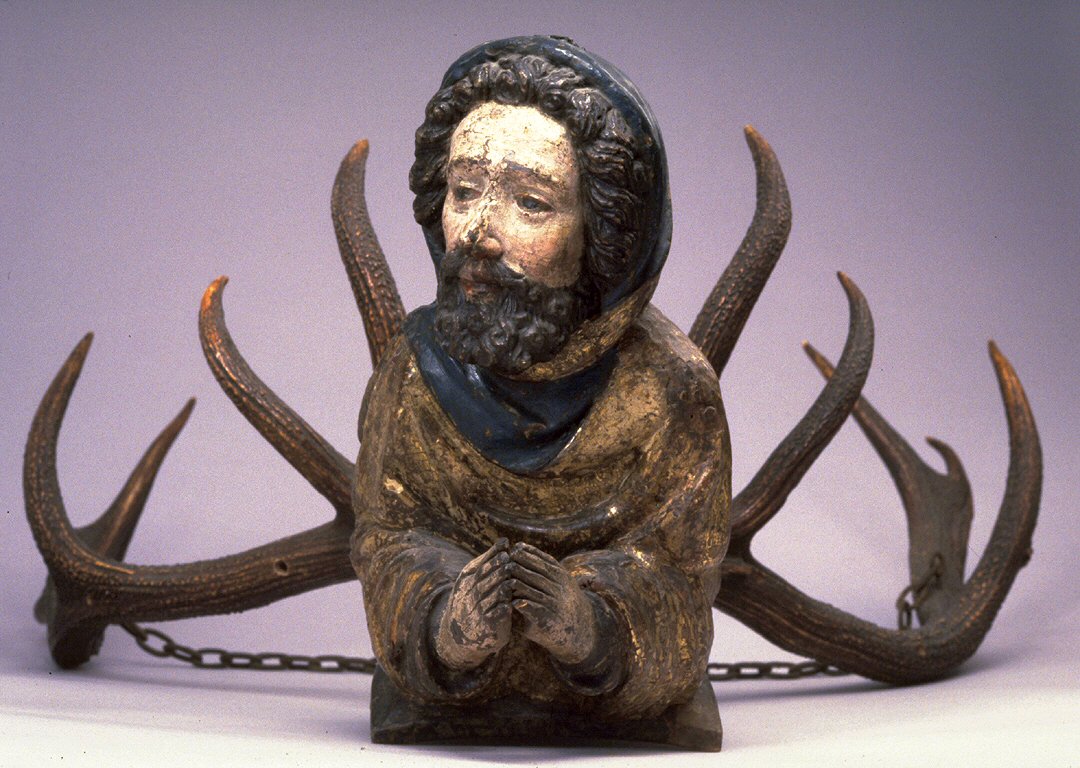Chandelier
This bizarre creation originally had little candleholders attached to the antlers. Chandeliers made from wooden half-figures with elk antlers attached at their backs called "Lüstermännchen" or "Lüsterweibchen," literally "little chandelier man" or "woman" were popular in Germany. Even major artists such as Tilman Riemenschneider designed them. They hung in town meeting halls, inns, hunting lodges and domestic spaces. While the spreading forms of antlers may have suggested its use as a natural chandelier, the addition of a half figure is the kind of hybrid creation that appealed to the medieval taste for fantasy.
Many of the existing chandeliers represent a woman holding a coat of arms (with the antlers growing from her back). The motif of a huntsman praying is unusual and may allude to the story of St. Hubert, a huntsman who came across a miraculous stag in the forest and fell on his knees before it in prayer.
Provenance
Provenance (from the French provenir, 'to come from/forth') is the chronology of the ownership, custody, or location of a historical object. Learn more about provenance at the Walters.
William Randolph Hearst [date and mode of acquisition unknown]; Blumka Gallery, New York; Mr. and Mrs. James O. Anderson, 1971, by purchase; Walters Art Museum, June 8, 1971, by gift.
Exhibitions
| 1971-1972 | World of Wonder. The Walters Art Gallery, Baltimore. |
Conservation
| Date | Description | Narrative |
|---|---|---|
| 5/28/1971 | Treatment | stabilized; repaired; other |
Geographies
Germany (Place of Origin)
Measurements
28 9/16 x 26 9/16 in. (72.5 x 67.5 cm)
Credit Line
Gift of Mr. and Mrs. James O. Anderson, 1971
Location in Museum
Centre Street: Third Floor: 15th-Century Art of Northern Europe
Accession Number
In libraries, galleries, museums, and archives, an accession number is a unique identifier assigned to each object in the collection.
In libraries, galleries, museums, and archives, an accession number is a unique identifier assigned to each object in the collection.
61.309




